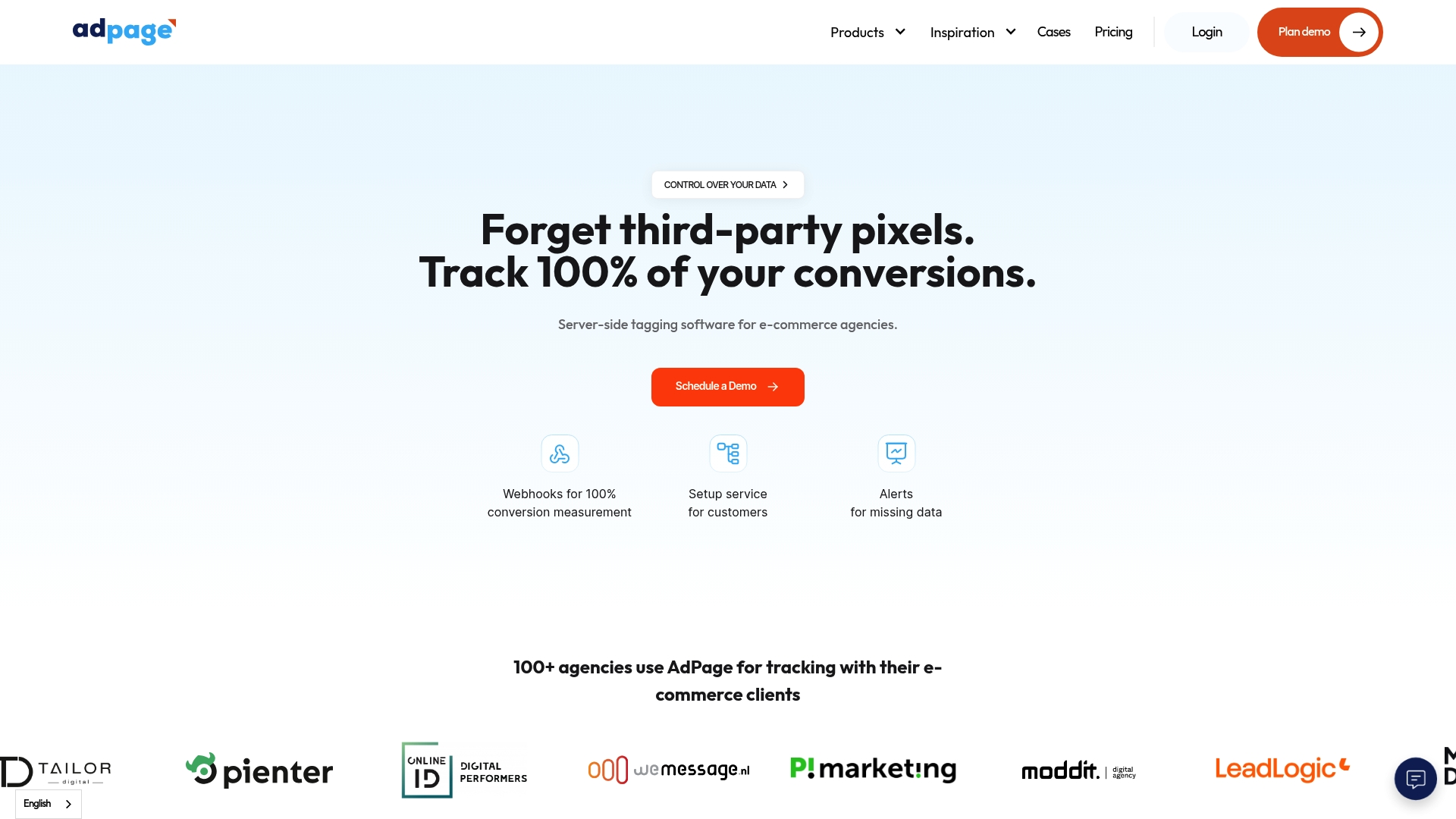More than 90 percent of internet users leave a digital footprint every day, yet confusion swirls around what information gets collected and why. With online privacy concerns rising and new regulations emerging, understanding user data collection has never been more urgent. This guide breaks down the facts, tackles the most common misconceptions, and offers clarity on how responsible data handling can protect both users and businesses.
Table of Contents
- Defining User Data Collection And Common Misconceptions
- Types Of User Data Collected Online
- How Server-Side Tagging Enables Accurate Tracking
- Consent Management And Gdpr Compliance Requirements
- Risks, Data Loss, And Best Practices
Key Takeaways
| Point | Details |
|---|---|
| Understanding User Data Collection | User data collection involves systematic processes that require transparency, consent, and compliance with privacy regulations to build user trust. |
| Types of User Data | Effective data collection includes provided, observed, and inferred data, each requiring careful management to maintain user trust and privacy. |
| Importance of Consent Management | Compliance with GDPR mandates explicit user consent and clear communication about data usage, essential for ethical data handling practices. |
| Mitigating Data Risks | Organizations must adopt robust strategies like encryption and regular audits to safeguard against privacy risks while building user trust. |
Defining User Data Collection and Common Misconceptions
User data collection represents the systematic process of gathering, tracking, and analyzing information about individuals’ digital interactions, behaviours, and preferences across online platforms. According to research from arxiv.org, there are several critical misconceptions surrounding this practice that can significantly impact how businesses approach data gathering.
One prevalent misunderstanding is that data privacy regulations universally prohibit all forms of data collection. In reality, these regulations aim to protect user rights while allowing responsible and transparent data gathering. Arxiv research emphasizes that privacy measures should be integrated early in system design, ensuring user trust and legal compliance. This approach helps businesses balance data insights with individual privacy protection.
Another common misconception involves assuming that large datasets automatically guarantee accurate insights. Arxiv research highlights that data volume does not inherently translate to data quality or valid conclusions. Businesses must understand nuanced collection processes, carefully validate data sources, and implement robust analytical frameworks to extract meaningful information.
Key aspects of effective user data collection include:
- Transparent consent mechanisms
- Clear communication about data usage
- Robust security protocols
- Ethical data handling practices
- Compliance with regional privacy regulations
Understanding these principles helps organisations move beyond simplistic data gathering toward strategic user data interpretation that genuinely enhances business intelligence and customer experience.
Types of User Data Collected Online
User data collection encompasses a complex ecosystem of information gathering that spans multiple categories and sources. According to research from guidelines.panelfit.eu, online data can be categorized into three primary types: provided, observed, and inferred data.
Provided data represents information users actively and deliberately share through online platforms. This category includes personal details like names, email addresses, demographic information, and voluntarily submitted preferences. When creating social media profiles, completing online forms, or registering for services, users directly contribute these data points. Guidelines research emphasises the transparency and consent required when collecting such information.
Observed data emerges from users’ digital interactions and behaviours. This includes browsing history, click patterns, time spent on specific pages, device information, IP addresses, and interaction logs. Tracking technologies like cookies and pixel tags enable businesses to capture these nuanced engagement metrics. By understanding how users navigate websites and interact with content, organisations can develop strategies for increased conversions.
Inferred data represents the most sophisticated category, where advanced analytics and machine learning algorithms derive insights by analyzing provided and observed data. These insights might include predicted preferences, potential purchasing behaviour, estimated income levels, or likely interests. While powerful, this data type requires careful ethical consideration to maintain user trust and privacy.

Key types of collected online data include:
- Demographic information
- Contact details
- Browsing and search history
- Purchase transactions
- Social media interactions
- Device and location data
- Engagement metrics
- Predicted behavioural patterns
Effective data collection balances technological capabilities with robust privacy protections, ensuring that user information is gathered responsibly and transparently.

How Server-Side Tagging Enables Accurate Tracking
Server-side tagging represents a sophisticated approach to digital tracking that moves critical data processing from client-side browsers to secure server environments. According to research from Wikipedia, understanding user interaction sequences is crucial for developing accurate tracking methodologies that capture comprehensive user behaviour.
Arxiv research highlights that tracking methodologies can significantly impact user experience and data collection precision. By processing tracking tags on servers instead of web browsers, organisations can overcome common limitations like ad-blocker interference, browser privacy settings, and incomplete data capture. This approach ensures more reliable and consistent tracking across different devices and platforms.
The technical mechanism of server-side tagging involves capturing user interactions on the client-side and then transmitting those interactions to a secure server for processing and analysis. Unlike traditional client-side tracking, which relies on browser-based scripts, server-side methods provide enhanced data integrity and reduced dependency on individual browser technologies. Exploring the benefits of server-side tagging reveals multiple advantages for digital marketing and analytics professionals.
Key benefits of server-side tagging include:
- Improved data accuracy
- Enhanced user privacy protection
- Better performance and faster page load times
- Reduced impact from ad-blockers
- More comprehensive tracking across multiple platforms
- Greater control over data collection processes
By implementing server-side tagging, businesses can develop more robust, reliable, and privacy-conscious tracking strategies that provide deeper insights into user behaviour while maintaining technical flexibility and compliance with evolving digital standards.
Consent Management and GDPR Compliance Requirements
Consent management is a critical framework for protecting user privacy and ensuring ethical data collection practices. According to Wikipedia, dataveillance requires robust mechanisms to obtain explicit user permissions before collecting and processing personal information.
The General Data Protection Regulation (GDPR) establishes comprehensive guidelines for managing user consent across digital platforms. Digital footprint research emphasises that organisations must implement transparent processes that allow users to understand, control, and revoke their data sharing permissions. This means providing clear, accessible consent mechanisms that explain exactly what data is being collected, why it’s being collected, and how it will be used.
Effective consent management involves several key components. Organisations must design user-friendly interfaces that clearly communicate data collection practices, enable granular consent options, and provide easy mechanisms for users to withdraw permissions. Understanding consent management solutions becomes crucial for businesses navigating complex privacy regulations.
Core principles of GDPR-compliant consent management include:
- Explicit and informed consent
- Freely given permission
- Specific and unambiguous consent requests
- Ability to withdraw consent easily
- Separate consent for different processing activities
- Age verification for minor data collection
- Documented consent records
- Clear, plain language explanations
By prioritising transparent consent practices, businesses can build user trust, demonstrate ethical data handling, and ensure compliance with evolving digital privacy standards.
Risks, Data Loss, and Best Practices
Data collection risks represent a complex landscape of potential privacy and security challenges for businesses and users alike. Arxiv research reveals that user identification through behavioral patterns can expose significant vulnerabilities in digital tracking methodologies, highlighting the critical need for robust protection strategies.
According to Wikipedia, data exhaust represents the digital trail users inadvertently generate during online interactions. This unintentional data trail presents substantial risks, including potential unauthorized access, identity theft, and comprehensive user profiling. Organisations must implement sophisticated safeguards to prevent malicious exploitation of these digital footprints.
Mitigating data collection risks requires a multi-layered approach that combines technological solutions with strategic governance. Understanding user data privacy becomes crucial in developing comprehensive protection frameworks that balance business intelligence with individual privacy rights.
Key best practices for minimising data collection risks include:
- Implement end-to-end encryption
- Regularly audit data collection processes
- Minimise data storage duration
- Use anonymisation techniques
- Develop clear data handling policies
- Train staff on privacy protection
- Use secure server-side technologies
- Maintain transparent user consent mechanisms
By proactively addressing potential vulnerabilities and adopting a privacy-first approach, organisations can transform data collection from a potential risk into a strategic asset that builds user trust and demonstrates ethical digital responsibility.
Unlock the Power of Accurate User Data Collection with AdPage
Understanding the complexities of user data collection and the challenges of ensuring transparent consent, privacy compliance, and precise tracking can be overwhelming. This article clearly highlights the struggle to balance robust data insights with ethical practices and evolving privacy regulations like GDPR. You need a solution that not only captures 100 percent of your conversions but also protects your users’ privacy while overcoming obstacles such as ad-blockers and browser restrictions.

AdPage offers a comprehensive platform designed specifically for e-commerce businesses and marketers determined to master user data collection through advanced server-side tagging. Our solution helps you regain control over data accuracy, eliminates data loss common with traditional analytics, and supports seamless integration with popular platforms like Shopify, WooCommerce, and Magento. With built-in consent management features you can ensure full GDPR compliance while building trust with your audience. Take the next step to optimise your marketing strategy and boost conversions today by visiting AdPage. Discover how to turn complex data challenges into a strategic advantage with ease.
Frequently Asked Questions
What is user data collection?
User data collection is the systematic process of gathering, tracking, and analyzing information about individuals’ digital interactions, behaviors, and preferences across online platforms.
What are the types of data collected online?
Online data is categorized into three primary types: provided data (information actively shared by users), observed data (information gathered from user interactions), and inferred data (insight derived through analysis of provided and observed data).
How does server-side tagging improve data tracking?
Server-side tagging enhances data tracking by processing data on secure servers instead of client-side browsers, allowing for improved accuracy, better privacy protection, faster performance, and reduced impact from ad-blockers.
What are some best practices for minimizing data collection risks?
To minimize data collection risks, organizations should implement end-to-end encryption, regularly audit data collection processes, use anonymization techniques, conduct staff training on privacy protection, and maintain transparent user consent mechanisms.



.png)
